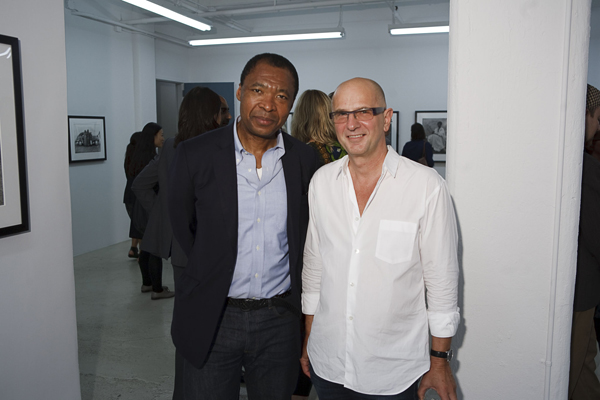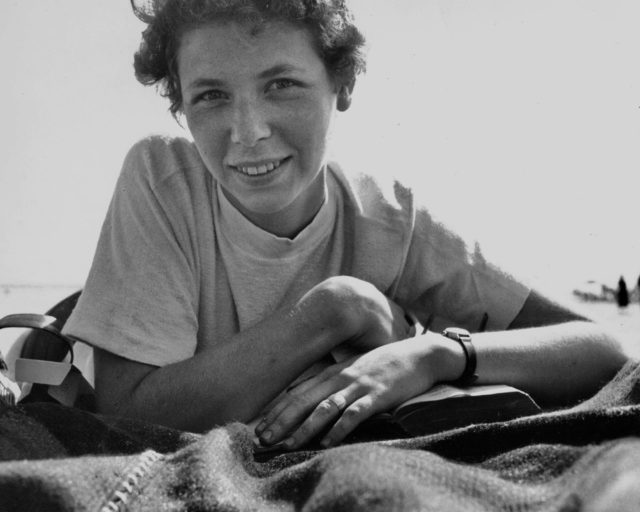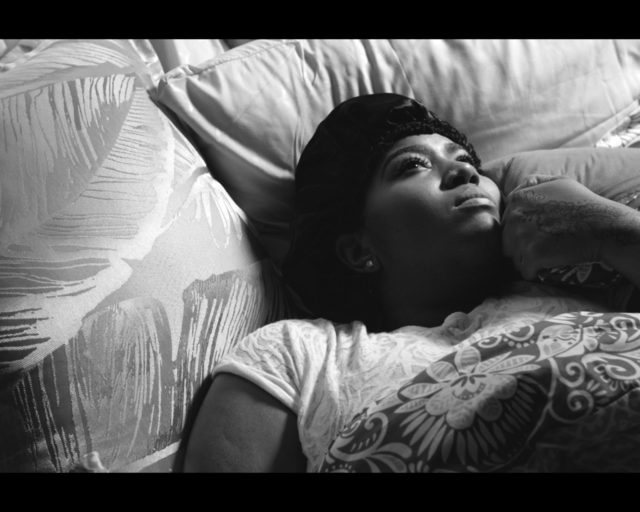Okwui Enwezor, 2015. Photograph by Alexa von Arnim
When the visionary curator Okwui Enwezor selected a title for the 2015 Venice Biennale, he chose “All the World’s Futures.” For many, this was an optimistic message of hope and prophecy. But for Enwezor, who died last week in Munich at the age of fifty-five, the future was less an abstract ideal than the embodiment of social change, a tangible ongoing project of individuals thinking and working in communal dialogue—a process in which art and art exhibitions played a central role. Unlike many curators, Enwezor understood that each exhibition was an essay or an argument, a brief in what he called his “change agenda.” By this he meant not only rewriting existing art-critical canons, but also introducing a radical rethinking of the role that art—and artists—can inhabit in shaping social and political ideas.

Courtesy The Walther Collection
Enwezor was, without doubt, the most influential curator of his generation, noted for bringing an unexpected global perspective to mega-exhibitions like Documenta and the Venice Biennale. From the late 1990s onward, during an era of proliferating biennials and blockbuster exhibitions, he was a master showman. But with his erudition and scholarly demeanor, Enwezor, who was born in Nigeria and moved to New York in the early 1980s, was able to steer clear of the glitzier commercial tendencies of art world spectacles and produce meaningful large-scale interventions. His exhibitions were typified by weighty themes and strong statements from non-Western artists, as well as by contributions from writers, critics, filmmakers, and performance artists. His Venice Biennale featured live readings from Karl Marx’s Das Kapital—all three volumes! Such lively participations always made his exhibitions engaging and entertaining; they were rich with ideas and complemented by the visions of younger artists, as well as by mini-retrospectives of artists who were previously overlooked or marginalized.

© the artist and courtesy JM Patras/Paris
Enwezor’s first major curatorial effort was the landmark exhibition In/sight: African Photographers, 1940 to the Present, which he organized with Octavio Zaya at the Guggenheim Museum in New York in 1996. In/sight coincided with the rise on the international stage of several African artists whose work is now considered canonical, including Seydou Keïta, Malick Sidibé, Samuel Fosso, and David Goldblatt, all of whom Enwezor wrote about in later books. Then, in an incredible run of large-scale group exhibitions staged from 1997 to 2017, Enwezor organized the 2nd Johannesburg Biennale (1997), Documenta 11 (2002), the 2nd Seville Biennial (2006), the 7th Gwangju Biennale (2008), Meeting Points 6 (2011), La Triennale 2012 at Palais de Tokyo, Paris, and the massive Venice Biennale (2015), along with numerous smaller exhibitions. For Enwezor, the exhibition was an opportunity for interrogation and research, and an extension of the archive—an idea he explored to great effect in Archive Fever: Uses of the Document in Contemporary Art (2008). He studied the form and meaning and history of exhibitions as what he called “thinking machines.” He noted that his projects evaluated not just the responsibility of art, but “the responsibility of an exhibition as a public forum.”
His organization of Documenta 11 in Kassel, Germany, in 2002 was an audacious and innovative breakthrough, widely considered the first truly global exhibition. It was breathtaking in its scope and ambition, with vastly increased spaces, a substantial infusion of non-Western voices, and scholarly research conferences (or “platforms”) organized in advance on four continents, from Lagos, Nigeria, to Saint Lucia in the West Indies. The exhibition—the fifth platform—foregrounded artists and collectives who addressed critical issues pertaining to transnational politics, raising cultural hybridity and cultural migration as key concerns in contemporary artistic practice. The implicit thesis of Documenta 11 was that the physical and psychic displacements of twenty-first-century global realignments could best be understood through cultural forms—the written, filmed, visualized, and performed expressions that shape identity and highlight social injustices in the challenged context of today’s world.

© the artist and courtesy the Goodman Gallery, Johannesburg
Enwezor was a citizen of world cultures, but throughout his work he returned to the primacy and centrality of African arts, not simply to redress the slights and omissions of lingering colonialist Eurocentrism, but also to assert the complex contemporaneity of approaches based on different histories and modalities. With a comprehensive and methodical agenda, he helped to engineer a profound reconsideration of the arts and culture of the African continent and diaspora. Initially grappling with the lack of a critical dialogue around art of African and African American artists, he cofounded, with Olu Oguibe and Salah Hassan, the critical publication Nka: Journal of Contemporary African Art in 1994. He later outlined a bold historical arc, often driven by photography, in exhibitions that traveled internationally, including The Short Century: Independence and Liberation Movements in Africa, 1945–1994 (2001), Snap Judgments: New Positions in Contemporary African Photography (2006), and Rise and Fall of Apartheid: Photography and the Bureaucracy of Everyday Life (2012). He also curated an important show on African photographic portraiture for The Walther Collection in Neu-Ulm, Germany, titled Events of the Self: Portraiture and Social Identity (2010).
These historical—yet often surprisingly timely—exhibitions were a postcolonial riposte to the conventional narrative of Western cultural dominance. They were also richly modeled investigations that traced the complex artistic genealogies of various African nations to demonstrate how art and photography were vital to self-expression and political self-determination. Enwezor’s exhibitions were frequently described as political, but this sometimes pejorative descriptor made them sound ponderous or didactic. They were anything but that. He understood and validated art as an important means of social activism, a form of translation and transmutation, a talking back to social inequalities and abuses of power. Yet, for Enwezor, who published frequently and championed artists including William Kentridge, David Goldblatt, Santu Mofokeng, Yinka Shonibare, Yto Barrada, Lorna Simpson, Rotimi Fani-Kayode, and Lyle Ashton Harris, the real power of the political was the construction of meaning in all things, artistic and otherwise—not merely as a propagandistic affirmation of ideologies, but as a subtler, allegorical way of representing and affirming the political in everyday life.

© the artist and courtesy the The Walther Collection
Although Enwezor served as director of the Haus der Kunst in Munich from 2011 to 2018, he was never comfortable in institutions, as an administrator or bureaucrat. He preferred to be, as he said, “unaffiliated.” At Haus der Kunst, a museum constructed by Adolf Hitler to highlight Germany’s nationalist artworks, Enwezor addressed the persistent cloud of World War II in the staging of his last major exhibition, the magisterial Postwar: Art between the Pacific and the Atlantic, 1945–1965, curated with Katy Siegel and Ulrich Wilmes. Enwezor brought together more than 350 works by 218 artists from 65 countries, as well as various scholarly symposia, to radically reconsider the responses of post–World War II artists to the substantive political circumstances of technological change, anticolonial liberation movements, and the international struggle for civil rights and human rights. Overturning any lingering belief in the triumph of American painting and other hackneyed formalist narratives of art history, this exhibition sought to redress the cultural, racial, and national biases of the past and to instate a more nuanced and egalitarian critical approach to modern art.
Enwezor understood that art and art exhibitions always have a role in responding to the messy and precarious world they inhabit. He opposed a view of art exhibitions and art practices that would preclude such political realities, or that would fail to address the future. “An exhibition, as a space of public discourse, a stage of anticipatory practices, and as a statement of intent,” Enwezor said, “can no more assert a distance from its cultural context than it can repress the very social conditions that bring it into dialogue with its diverse publics.” Art was, for him, an “analytical lens” through which to engage the world and to apprehend the future, and the exhibition was art’s platform, a thinking machine to navigate a legacy of catastrophes instigated by Western capitalism and its colonialist enterprises. “To think about the future,” Enwezor reflected, “is to think about one’s own possibilities in the world.”


























